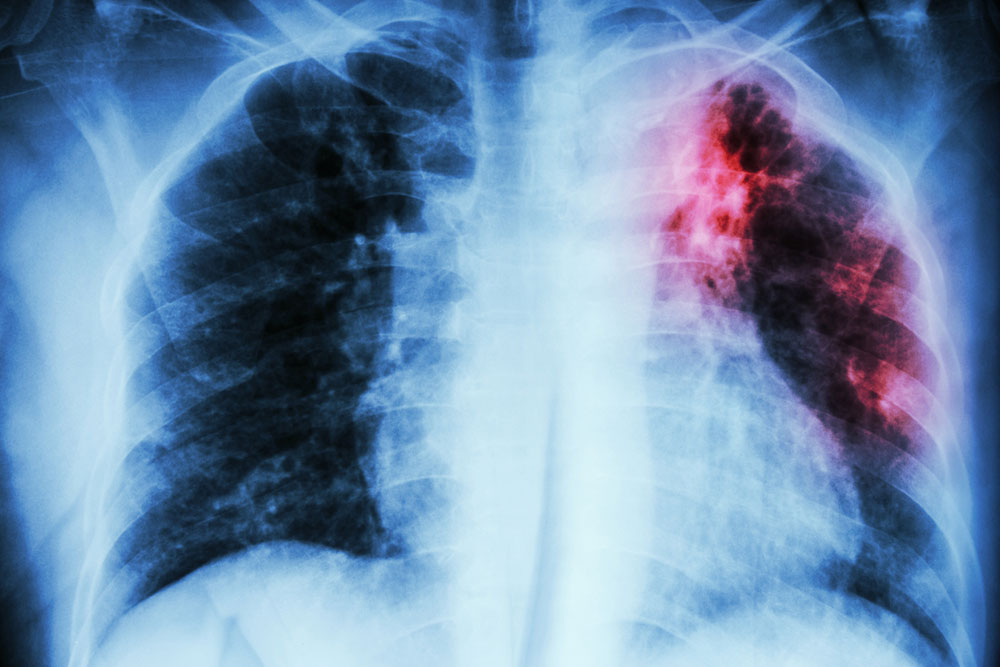Comprehensive Guide to Pulmonary Embolism: Causes, Symptoms, Diagnosis, and Treatment
Pulmonary embolism is a life-threatening condition caused by blood clots blocking the lungs' arteries. This comprehensive guide explores its causes, symptoms, diagnostic methods, and treatment options, emphasizing early detection and management. Learn about risk factors such as surgery, pregnancy, and immobility, and understand the importance of prompt medical intervention to prevent severe complications. From clinical assessment to advanced imaging and treatment strategies like anticoagulants and thrombolytics, this article covers everything you need to know about pulmonary embolism for better prevention and care.

Comprehensive Guide to Pulmonary Embolism: Causes, Symptoms, Diagnosis, and Treatment
Pulmonary embolism (PE) is a serious and potentially life-threatening condition that occurs when a blood clot blocks a pulmonary artery in the lungs. This blockage impairs blood flow and reduces oxygen exchange, which can lead to significant health complications if not diagnosed and managed promptly. The origin of these clots is typically elsewhere in the body, often traveling from deep veins in the legs or arms, and then lodging in the lungs. Understanding the causes, recognizing the symptoms, and knowing how PE is diagnosed and treated are critical for improving outcomes and saving lives.
Pulmonary embolism is frequently linked to various risk factors and conditions that predispose individuals to clot formation. These include genetic predispositions, lifestyle factors, and specific medical conditions. For example, patients with prolonged immobility due to surgical recovery, hospitalization, or long-distance travel are at increased risk. Post-surgical patients, especially those who have undergone orthopedic procedures like knee or hip replacements, are highly susceptible due to reduced mobility and injury-related inflammation.
Hormonal influences significantly contribute to clot risk as well. Pregnant women experience hormonal changes that increase blood viscosity and clotting tendency, especially after cesarean deliveries. Usage of hormone therapy and oral contraceptives containing estrogen further elevate the risk, notably in individuals who smoke or are overweight. Elderly populations are more vulnerable due to decreased physical activity and other age-related factors that promote clot development.
The pathophysiology of PE involves a complex process where a deep vein thrombosis (DVT)—a blood clot in the deep veins—breaks off and travels via the bloodstream to the lungs. Once lodged in a pulmonary artery, the clot can obstruct blood flow, leading to impaired oxygenation. Small emboli may resolve spontaneously, but larger clots can cause substantial breathing difficulties, chest pain, or even collapse. The severity of the condition depends on the size of the clot and the degree of vessel obstruction.
Recognizing the symptoms of pulmonary embolism is essential for early intervention. Common signs include sudden chest pain that may worsen with deep breaths or coughing, shortness of breath, rapid heartbeat, sweating, and a sense of anxiety. Some patients may present with pale or bluish skin due to low oxygen levels. Severe cases can lead to collapse, cardiogenic shock, or death if not treated swiftly.
Diagnosis of PE relies on a combination of clinical assessment and diagnostic tests. Healthcare providers often start with a detailed patient history and physical examination, paying attention to risk factors and symptomatology. Diagnostic tests include D-dimer blood tests that measure clot breakdown products, which can suggest clot presence but are not definitive. Imaging studies are crucial: a computed tomography pulmonary angiography (CTPA) remains the gold standard for detecting emboli, providing detailed images of pulmonary vessels. Other tests include ventilation-perfusion (V/Q) scans, chest X-rays, echocardiograms, and pulmonary angiography in complex cases.
Effective treatment hinges on rapid diagnosis and initiation of anticoagulation therapy. Anticoagulants like heparin (administered intravenously) and warfarin (oral) are used to prevent clot growth and new clot formation. In severe or massive PE cases, thrombolytic therapy using drugs such as alteplase may be administered to dissolve the clot actively. Mechanical interventions like catheter-directed thrombectomy or surgical embolectomy are reserved for life-threatening situations or when anticoagulation is contraindicated.
Post-treatment management involves continued anticoagulation therapy over months to reduce the risk of recurrence, along with lifestyle modifications. Patients are advised to stay physically active, avoid prolonged immobility, and manage underlying conditions like hypertension or obesity. Regular monitoring and follow-up using imaging and blood tests are essential to ensure treatment efficacy and to monitor for potential side effects like bleeding complications.
Prevention plays a critical role, especially for high-risk groups. Measures include early mobilization after surgery, use of compression stockings to improve blood flow, and prophylactic anticoagulation in hospitalized or immobile patients. Long-term strategies depend on the individual’s risk factors and medical history.
Understanding pulmonary embolism comprehensively—from its causes, symptoms, and diagnostic procedures to effective treatment options—can significantly improve patient outcomes. Awareness and early intervention are key to reducing mortality associated with this condition and ensuring rapid recovery for affected individuals. If you suspect symptoms of PE, seek immediate medical attention to prevent serious complications and save lives.




